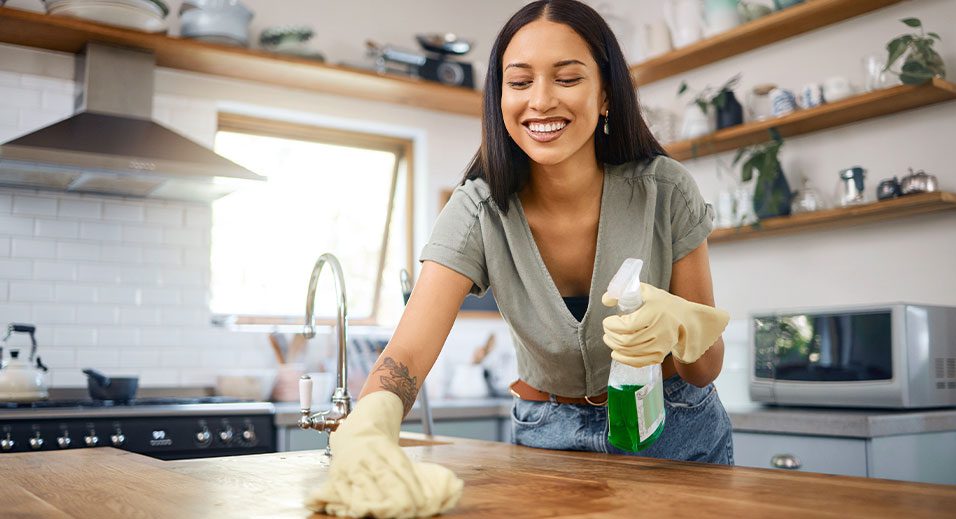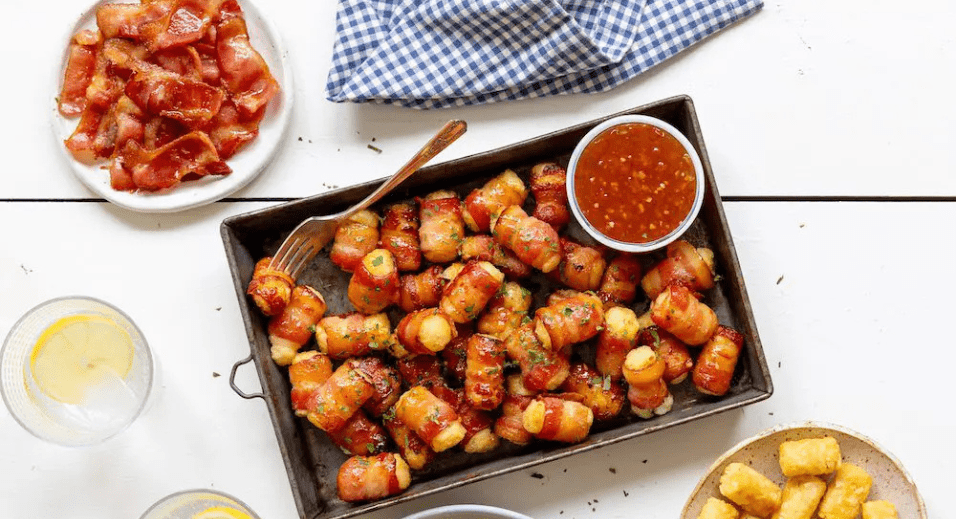Check out our comprehensive guide on kitchen safety and safe food handling!
By Spir Marinakis, VP, Food Safety & Quality Assurance
A clean and safe kitchen is the heart of a healthy home. Maintaining proper food safety practices is key in keeping a hygienic cooking environment, and crucial in preventing harmful foodborne illnesses. In this post, we’ve built a list of 10 essential tips and tactics to help you and your family not only keep your kitchen clean and tidy, but also ensure that you’re handling your food items safely and correctly. Safety and health should always be at the top of our minds when it comes to preparing food!
Before anything, wash hands thoroughly
The foundation of a safe session in the kitchen begins with clean hands. Always remember to wash your hands thoroughly with warm water and soap for 20 seconds before handling any type of food. You should be able to sing “Happy Birthday” twice in this time.
In addition to handwashing before cooking, also make it part of your regimen to always wash your hands after handling raw ingredients, especially raw meats and eggs! This simple step plays a big role in helping prevent the transfer of harmful germs or bacteria to and from your food.
Separate raw and cooked foods to avoid cross contamination
To minimize the risk of cross contamination, keep raw ingredients separate from cooked foods. Designate separate utensils and cutting boards for different types of food (for example, raw meats and raw vegetables). Never place cooked food on surfaces that have had contact with raw meats without proper cleaning first. You may opt to use colour-coded boards or markers that could be a helpful visual cue in order to reduce the chances of accidental mix-ups.
Make sure you’re cooking your food to safe temperatures
Colour is not a reliable indicator of doneness! Ensure that food is cooked to the proper internal temperatures, which vary by dish. For example, the safe temperature for chicken 165°F (74°C), while beef, pork, and lamb should reach at least 145°F (63°C). Furthermore, a temperature of only 63°C requires a rest time of 3 minutes before the product is cut or handled. This rest time is critical to effectiveness of the cook process and safety of the product. Investing in a reliable instant-read thermometer is a kitchen essential to consistently ensuring your foods are cooked until safe to consume.
Store food at safe temperatures
Prevent the growth of bacteria in perishable foods by maintaining safe refrigeration practices. Set your refrigerator at 40°F (4°C) and your freezer at 0°F (-18°C). Refrigerate leftovers immediately and try not to leave perishables out at room temperature for too long.
Organizing your fridge can play a big role in maintaining a clean and safe kitchen as well. For example, store leftovers in clear containers and track them by labelling the date they were prepared on. Keep raw meats stored on the bottom shelf to prevent juices from leaking onto other foods in your fridge.
Thaw frozen items the proper way
It’s common to overlook safe thawing practices when convenience and time saving become priority in a busy schedule. Plan ahead and ensure thawing is done correctly. There are three ways you can safely thaw food: in the refrigerator, in the microwave, or in cold water. Avoid leaving frozen foods out in room temperature to thaw as this can allow bacteria to multiply very quickly.
Regularly clean and sanitize your kitchen surfaces
Clean your kitchen workspaces regularly, like countertops, stoves, and sinks, as well as tools like utensils and cutting boards. It’s also a great idea to go beyond routine cleaning by periodically sanitizing kitchen surfaces — this extra step helps to eliminate lingering bacteria. Remember to also clean areas that are often overlooked, such as the faucet, refrigerator, and cabinet handles!
Wash fruits and vegetables thoroughly before consuming
Wash fruits and vegetables under running water to remove dirt and pesticides. You can also consider purchasing a fruit and veggie wash spray to help remove wax and other contaminants. This will help to prevent the transfer of contaminants on the produce, even if you plan to peel or grate it.
Ensure your water source is safe and clean
Water safety is one of the most important but most easily overlooked components when working in the kitchen. Regularly check the quality and condition of your water filters and be sure to handle any issues promptly. It’s also a great practice to frequently clean water dispensers and ice machines.
Be on top of expiry dates
It never hurts to do a sweep of your refrigerator and pantry to check for expired items. In fact, it does hurt if your accidental consumption of expired foods leads to foodborne illnesses! Regularly check on the best before and expiry dates on both perishables and non-perishables. This easy habit will help ensure that your ingredients are used at their highest freshness and quality and remind you to discard any that are past their prime.
Spread the knowledge!
Now that you’ve learned all the best ways to keep your kitchen routine clean and safe, use these tips to promote a culture of food safety with your family and friends! If you live with others in the same household, a nice activity could be to create a kitchen safety checklist to involve everyone in the shared responsibility of maintaining a clean and healthy cooking workspace.
Consistency goes a long way with these tips! Because at the end of the day, a clean and safe kitchen is more than just a place to create delicious and creative dishes — it’s the foundation for the health and well-being of your loved ones.




